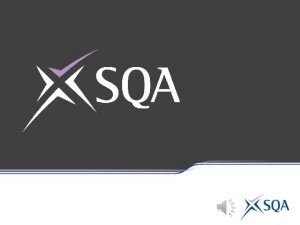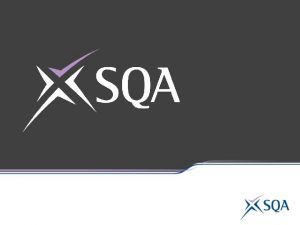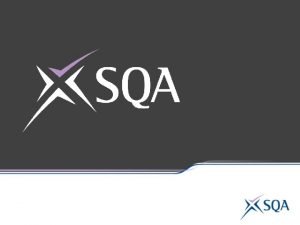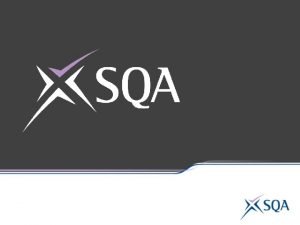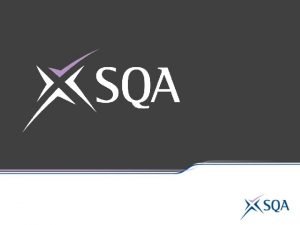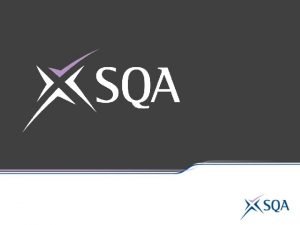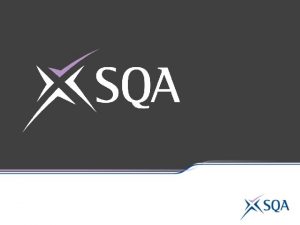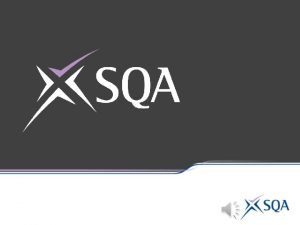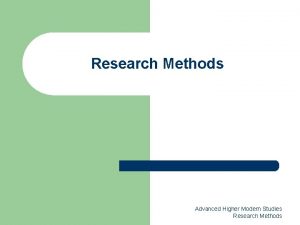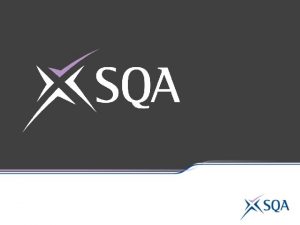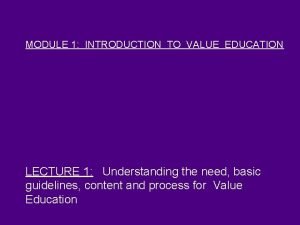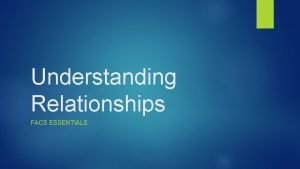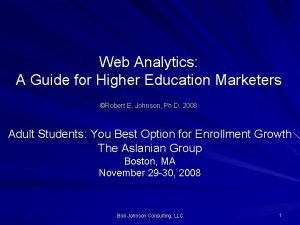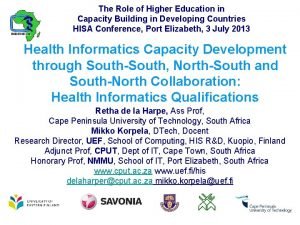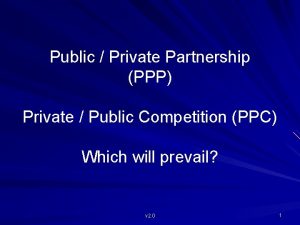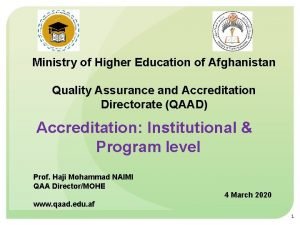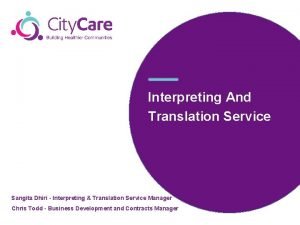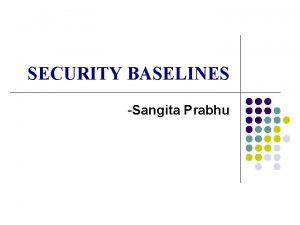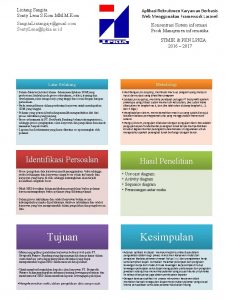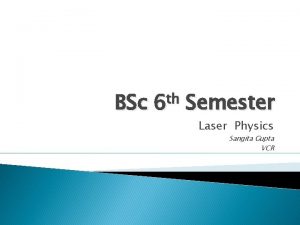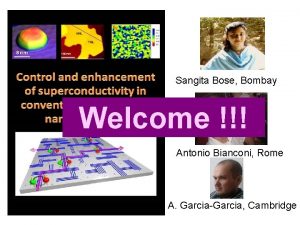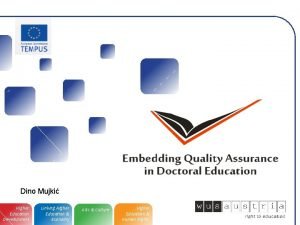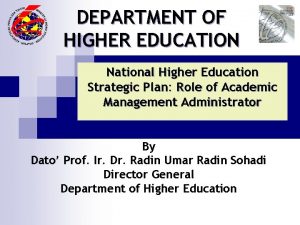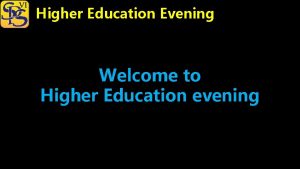UNDERSTANDING E LEARNING IN HIGHER EDUCATION Dr Sangita





















- Slides: 21

UNDERSTANDING E- LEARNING IN HIGHER EDUCATION Dr. Sangita Purohit Head library AHMEDABAD UNIVERSITY

WHAT IS E - LEARNING The use of Internet technologies to deliver a broad array of solutions that enhance knowledge and performance E-learning is Internet-enabled learning Learning enabled by Electronic media is known as E-Learning. E learning is facilitated by the utilization of Information &Communication Technology. It is a process of Education which utilizes use of computer , network telecommunication and storage devices Two categories: synchronous and asynchronous

SYNCHRONOUS Similar to the traditional classroom in that you are meeting at a particular time via audio, video streaming or a chat room ASYNCHRONOUS Allows you to work at your own time and pace with periodic communication with the instructor Takes a lot of patience, motivation, self-confidence, dedication and a general knowledge of using a computer SUCCESS FACTORS Individual’s learning style Behavior type Age Gender Teacher

TRUTH OF E-LEARNING Internet has started reshaping higher education. Education will not be the same in the next decade There is no going back. The traditional classroom has to be transformed Many universities/colleges may not survive by the end of next decade

EVOLUTION OF EDUCATION TECHNOLOGY IMPACT TIME Internet: Greatest impact TIME


OBJECTIVES OF E-LEARNING: The following are the objectives of E-learning: All students and faculties will have access to information technology in their classrooms, colleges, communities, and homes; All faculties will use technology effectively to help students achieve high academic standards; All students will have technology and information literacy skills; Research and evaluation will improve the next generation of technology applications for teaching and learning; Digital content and networked applications will transform teaching and learning; and distance education provided the base for E-learning’s development

TYPES OF E-LEARNING: VITUAL CLASS ROOM The intention of virtual classrooms is to extend the structure and services that accompany formal education programs from the campus to learners. Neutral classroom are for those who may by perusing a distance education program made up entirely of online lessons. Rapid e-learning: uses tools such as Adobe captivate and Adobe Presents to reduce the time it takes to produce rich, engaging FLV learning content, while allowing more non-technical contributors. ONLINE LEARNING; Learning management systems are serving as the basis for building online programs where the learning is entirely through digital mode. MOBILE LEARNING: It takes advantage of place independent flexibility that comes from working away from the PC; it provides the opportunity to connect informal learning experiences that occur naturally throughout the day with formal learning, such as in the virtual class model using interesting programmes or online learning.

TRADITIONAL LEARNING VS E-LEARNING : Traditional Learning Teacher Centered Single Media Isolated Work Information Delivery Factual-based Learning Bricks & Board Push approach E-Learning Student Centered Multimedia Collaborative Work Information Exchange Skills-based learning Technology-enabled learning Pull approach

ADVANTAGES OF E- LEARNING : E-learning provides opportunity both formal and informal learning communities; Learning resources can be relatively easily developed using a variety of standard packages, hence more compact and durable; In E-Learning, one can make use of and link into, other relevant resources available on the Internet; E-Learning provides flexible delivery of content material over Internet for 24 x 7 hours; Online delivery of reading materials is relatively cheap, as there are no printing and distribution costs; E-learning provides flexible communications to students, tutors, LIS professionals as they can communicate to each other both in real time and asynchronously across the globe; E-learning enables both one to-one and one-to-many combinations Higher maintenance of content through personalized learning;

ADVANTAGES OF E- LEARNING- CONT. Improved collaboration and interactivity among students. Teaching and communication techniques create an interactive online environment; Another advantage of E-learning is less embarrassment at the time of online examination or training and practice because there will not be any disgrace for a person having fear of failure in front of group; Contents can be updated quickly and in time; and Users can be exposed in modern technique in teaching-learning process.

CHALLENGES OF E-LEARNING: Availability of Internet and its successful utilization Use of data morally and legitimately Determination of nature and degree of data Legal and social issues related with the encompassing of the data. Use of joined data successfully - Access required data adequately

E- LEARNING TECHNOLOGIES: At present, e-learning technologies encompass three main areas of activity: Content creation and management: the sourcing, creation, storage and management of e-learning content — functions typically addressed by a learning content management system (LCMS); Learning management: the capture and application of information about learning resources, existing skills and learning activities to measure and manage learning outcomes at the organizational level — functions typically addressed by a learning management system (LMS); and Learning activity: the delivery of e-learning content, facilitating interaction and learning assessment — functions typically performed by instructors or trainers. The three do not necessarily exist as discrete, identifiable systems. There is overlap and ambiguity in their functions and definitions. The term ‘virtual learning environments’ is also sometimes used to promote systems that have characteristics of all three. Put simply, an LCMS generates, stores, structures and delivers e-learning content , whereas an LMS is more an administrative tool that handles enrolment or registration, tracks students’ progress, and records assessment scores and course completions.

THE EDUCATION SYSTEM AND E- LEARNING : The evolution of Computer and Education became computational teaching environments an excellent choice for Distance Learning, by bringing new vigor to this field of science. Computer Networks and Multimedia fields have provided tools for the development of Tutoring Systems based on client server architectures. The popularity of Internet along with the extensive development and use of standard protocol and services make Internet very attractive for distance learning. There has been a big boom of tools and mechanism available for implementation and support of Distance Learning The educational system has focused more and more on learning instead of teaching. The development of learning theories has changed the nature of student’s learning and perception. Knowledge is today considered something socially built throughout students’ actions, communication and reflections The classic approach of education on knowledge transmission has been changing into a model of practical experimentation and interaction that promotes changes in concepts and students’ strategy, until he reaches proficiency. In this context, teachers perform the role of supporter instead of information provider. The development of the E-learning revolution arose from a number of other educational revolutions. Four such revolutions are: The invention of reading and writing The emergence of the profession of teacher/scholar The development of moveable type (print technology) The development of electronic technology

TECHNOLOGY USED IN E- EDUCATION In E-Learning numerous innovations have been embraced for its constant change which are as under. Collaborative software Computer aided assessment Discussion boards E-mail Educational Management System Educational animation Electronic performance support system E Portfolios Games Hypermedia in general Learning management systems PDA’s Classroom response system

TECHNOLOGY USED IN E- EDUCATION. Cont Podcasts MP 3 Players with mixed media abilities Multimedia CD-ROMs Screen throws Simulations Text visit Virtual classrooms Web-based educating materials Web destinations and web 2. 0 groups Wikipedia Classroom reaction framework Extensive variety of media and advancements can make use in E-Learning. They can be grouped by collaboration apparatuses/conveyance media. These has helped understudy to get best outcomes and best learning. In light of these innovations many organizations now have made numerous helpful learning items

FUTURE OF E-LEARNING: The companies and careers of the future will utilize technologies that have not even been conceived of today. These technologies will require a whole new set of skills from the workforce. Learning to use the new technology will be important, and so will using those technologies to learn. The world is shrinking rapidly. The Internet has brought the world together in ways that nobody would have expected. You can now attend a college half way around the world, with students from any country with Internet access. People will telecommute to their jobs more in the future, while their companies compete globally. In order to meet the needs of the changing world noted above, future learning must take on more of the following qualities: Time flexible Geography independent Competitive cost / value Learner-centered Technology embracing Ethnically diverse

FUTURE OF E-LEARNING: cont Organizations that deliver learning will need to consider these issues and more: Realize what market they serve Be responsive to learner needs Prove their value to learners Listen closely to the needs of business Remove some of the massive burdens on instructors Look for partnerships with other complementary organizations Find creative ways to certify learning credentials Be prepared to compete globally with a variety of learning providers

FUTURE OF E-LEARNING: cont As a result of all of those factors we may see some of the following predictions come true in the next decade: Corporations will compete directly with colleges and K-12 schools. Partnerships and mergers between learning institutions, publishers, technology companies, learning providers will consolidate the marketplace. Many schools and colleges will be taken over or will go out of business delivery, classroom facilitator, learner support, etc. Top instructors will be hired by the private sector for all the positions stated above. Fewer students will get the traditional on-campus degree, and most will get at least a portion of it online and off-campus. Learning providers will compete over learners especially those that are highly motivated and able to pay the most. Learners will complete degrees and certificates made up of courses and experiences from a wide range of learning providers.

CONCLUSION: E-learning has gives education a new dimension, taking classroom learning to the next level through the creation of virtual communities of learners and teachers who interact online. E-learning is more than distance education where resources are simply put online. E-learning is a virtual campus that involves rich, instructional and social interaction; it could improve the flexibility, quality and focus of education. We are really on the threshold of new opportunities and this is just the beginning of a new horizon of education. The power of E-learning lies in its potential to provide the right information to the right people at the right time and place, and not only due to it’s “anyone, anyplace, anytime model”. Technology advancements will continue to reshape learning over the Internet with increasing use of streaming, TV-quality video and simulation-based Elearning. The same technology is bound to make major inroads in schools in the coming years.

Thank You
 Jasmine simhalan
Jasmine simhalan Understanding standards higher media
Understanding standards higher media Sqa advanced higher geography understanding standards
Sqa advanced higher geography understanding standards Advanced higher art contextual analysis example
Advanced higher art contextual analysis example Sqa understanding standards advanced higher computing
Sqa understanding standards advanced higher computing Understanding standards advanced higher english
Understanding standards advanced higher english Sqa advanced higher english understanding standards
Sqa advanced higher english understanding standards Higher modern studies understanding standards
Higher modern studies understanding standards Advanced higher mathematics of mechanics
Advanced higher mathematics of mechanics Understanding standards higher art
Understanding standards higher art Advanced higher modern studies understanding standards
Advanced higher modern studies understanding standards Sqa psychology assignment
Sqa psychology assignment Cuadro comparativo e-learning b-learning m-learning
Cuadro comparativo e-learning b-learning m-learning Basic guidelines for value education
Basic guidelines for value education Learning targets helping students aim for understanding
Learning targets helping students aim for understanding All learning is understanding relationships
All learning is understanding relationships Web analytics in higher education
Web analytics in higher education Capacity building in the field of higher education
Capacity building in the field of higher education Importance of faculty in higher education
Importance of faculty in higher education Ri board of governors
Ri board of governors Higher education ppc
Higher education ppc Ministry of higher education (afghanistan)
Ministry of higher education (afghanistan)

